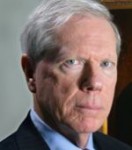 Paul Craig Roberts – The Federal Reserve raised the interbank borrowing rate today by one quarter of one percent or 25 basis points. Readers are asking, “what does that mean?”
Paul Craig Roberts – The Federal Reserve raised the interbank borrowing rate today by one quarter of one percent or 25 basis points. Readers are asking, “what does that mean?”
It means that the Fed has had time to figure out that the effect of the small rate hike would essentially be zero. In other words, the small increase in the target rate from a range of 0 to 0.25% to 0.25 to 0.50% is insufficient to set off problems in the interest-rate derivatives market or to send stock and bond prices into decline.
Prior to today’s Fed announcement, the interbank borrowing rate was averaging 0.13% over the period since the beginning of Quantitative Easing. In other words, there has not been enough demand from banks for the available liquidity to push the rate up to the 0.25% limit. Similarly, after today’s announced rate hike, the rate might settle at 0.25%, the max of the previous rate and the bottom range of the new rate. Continue reading

 Greg Hunter – Money manager Axel Merk says you simply must own physical gold in this risky environment. Merk explains, “Many people say why invest in a brick that doesn’t pay interest? When you look at cash paying negative interest rates on a real basis, after inflation, then a brick suddenly doesn’t look so bad anymore. . . . I would allege the Fed is all but promising to be behind the curve. Even if the Fed is trying to raise rates, emphasis on trying, they will be behind inflation. Yes, they will raise rates, but net inflation, real interest rates are going to continue to be negative. If I look out a decade from now, I don’t see how the U.S., Europe, Japan, or any other country can afford positive real interest rates.”
Greg Hunter – Money manager Axel Merk says you simply must own physical gold in this risky environment. Merk explains, “Many people say why invest in a brick that doesn’t pay interest? When you look at cash paying negative interest rates on a real basis, after inflation, then a brick suddenly doesn’t look so bad anymore. . . . I would allege the Fed is all but promising to be behind the curve. Even if the Fed is trying to raise rates, emphasis on trying, they will be behind inflation. Yes, they will raise rates, but net inflation, real interest rates are going to continue to be negative. If I look out a decade from now, I don’t see how the U.S., Europe, Japan, or any other country can afford positive real interest rates.”